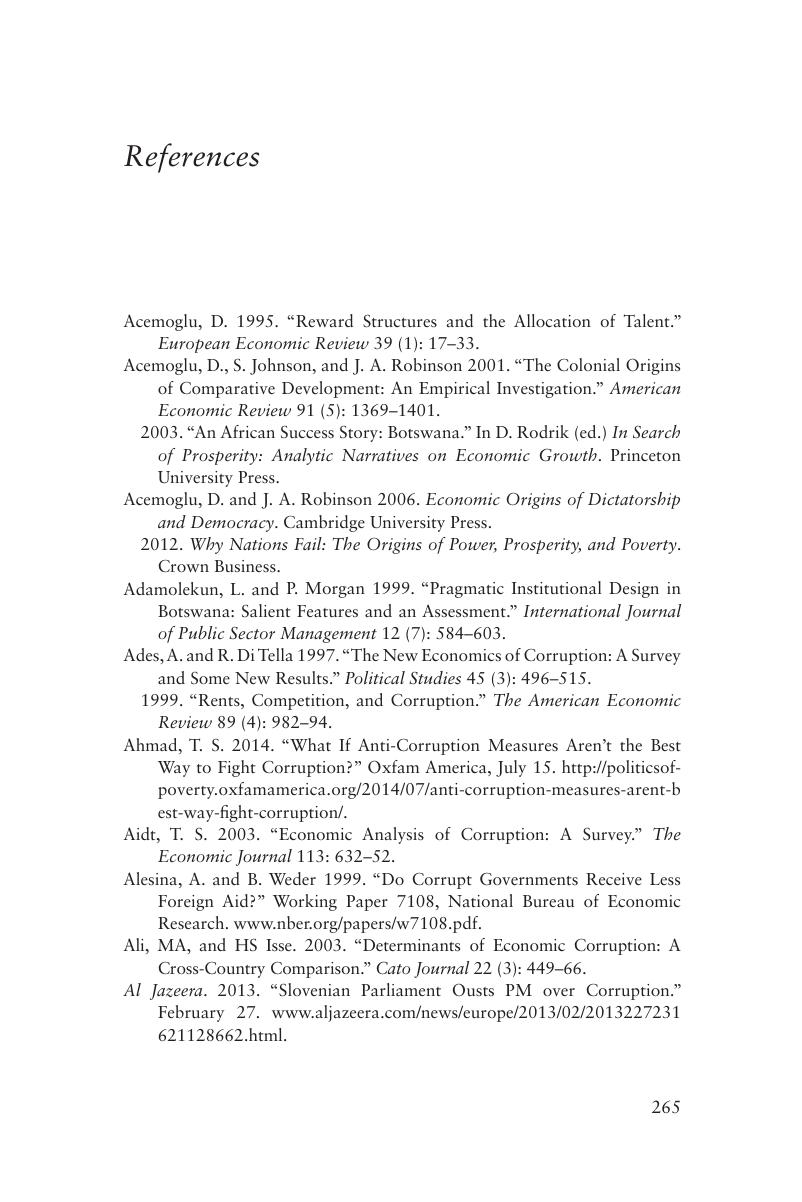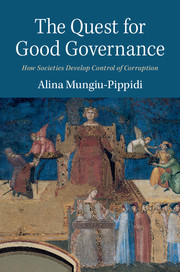Book contents
- Frontmatter
- Colophon
- Contents
- List of figures
- List of tables
- List of abbreviations
- Acknowledgments
- 1 Understanding control of corruption
- 2 Diagnosis and measurement
- 3 The road to Denmark: historical paths to corruption control
- 4 Structure and agency: determining control of corruption
- 5 Understanding contemporary achievers
- 6 Domestic collective action capacity
- 7 International agency and its anticorruption impact
- 8 From critical mess to critical mass: some tentative policy conclusions
- Appendix 1 Explaining bribery
- Appendix 2 List of variables and sources
- Appendix 3 Brief description of databases and surveys used
- Appendix 4 Impact of anticorruption interventions on control of corruption: bivariate regressions
- Appendix 5 HDI differentials from Figure 4.1
- Appendix 6 Classification of countries by governance orders
- References
- Index
- References
References
Published online by Cambridge University Press: 05 September 2015
- Frontmatter
- Colophon
- Contents
- List of figures
- List of tables
- List of abbreviations
- Acknowledgments
- 1 Understanding control of corruption
- 2 Diagnosis and measurement
- 3 The road to Denmark: historical paths to corruption control
- 4 Structure and agency: determining control of corruption
- 5 Understanding contemporary achievers
- 6 Domestic collective action capacity
- 7 International agency and its anticorruption impact
- 8 From critical mess to critical mass: some tentative policy conclusions
- Appendix 1 Explaining bribery
- Appendix 2 List of variables and sources
- Appendix 3 Brief description of databases and surveys used
- Appendix 4 Impact of anticorruption interventions on control of corruption: bivariate regressions
- Appendix 5 HDI differentials from Figure 4.1
- Appendix 6 Classification of countries by governance orders
- References
- Index
- References
Summary

- Type
- Chapter
- Information
- The Quest for Good GovernanceHow Societies Develop Control of Corruption, pp. 265 - 288Publisher: Cambridge University PressPrint publication year: 2015



